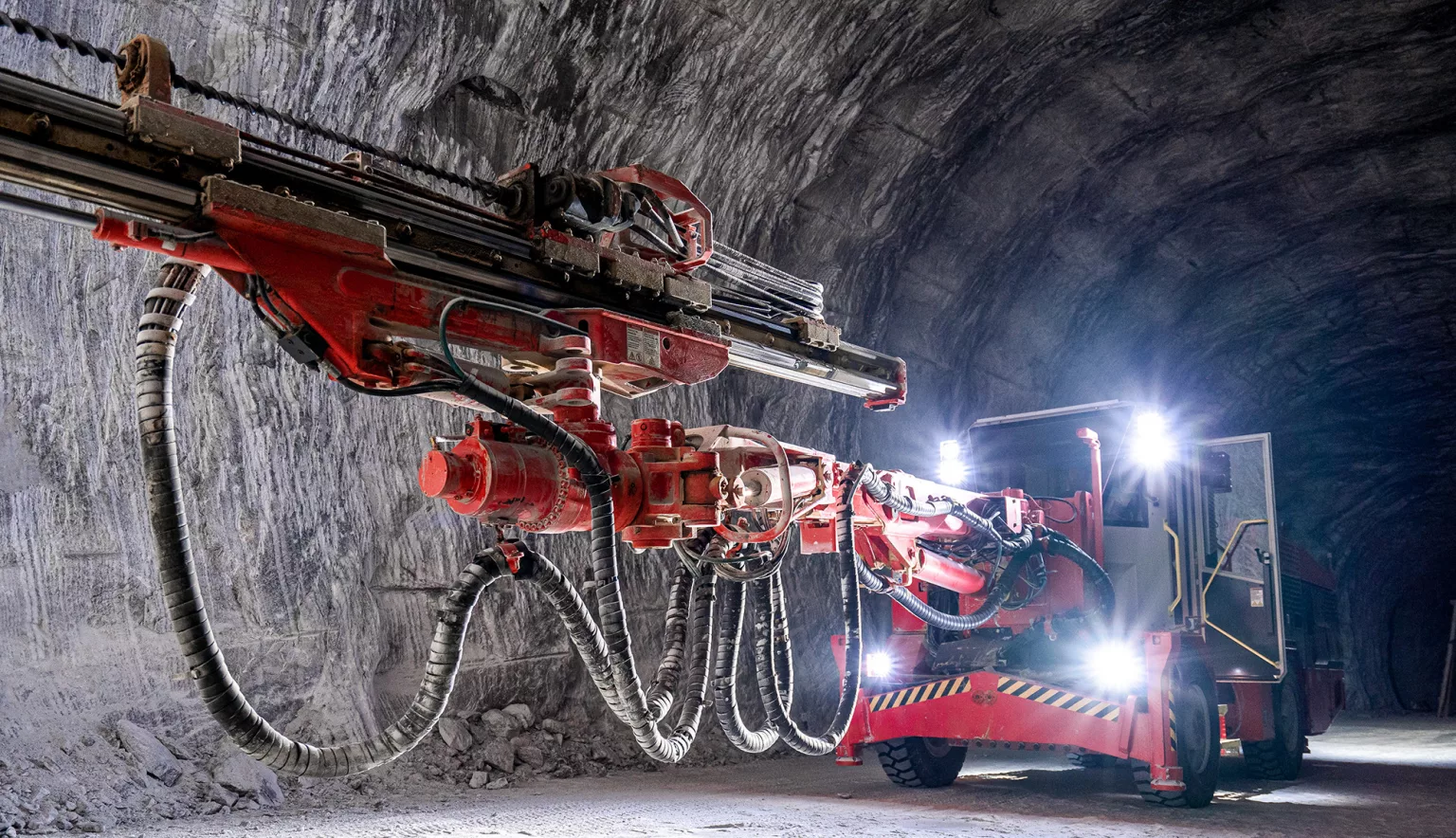Salrom is Romania’s largest salt producer, but it also offers unique saline tourism excursions into the country’s disused mines.
SALT OF THE EARTH
“On every table in the world, salt, we see your piquant powder sprinkling vital light upon our food.”
These are the words that Nobel Laureate Pablo Neruda once wrote about salt, arguably one of the world’s most vital minerals.
For thousands of years, salt has been used as both flavour enhancer and preservative, making it possible to transport food over vast distances. This has made it pivotal to the establishment of civilisations, and a vital cornerstone of ancient economies. Roman soldiers were paid their wages in salt; this ‘salarium’ is where the word ‘salary’ comes from.
Salt is found in solid form (in rocks, earths, sands, plants) or liquid form (seawater or saline rivers). In general, most of the world’s salt is harvested from mines or through the evaporation of mineral rich waters. Different mineral contents and processes can lead to variations – for example, Himalayan pink salt is mined from the Khewra Salt Mine and gets its distinctive pink colour from trace amounts of iron oxide.
These days, sophisticated extraction and processing techniques enable salt to be used in a wide variety of applications beyond food processing.
“We offer a portfolio of salt and salt-based products. These include gem salt, which is exploited through mining works, with use for human consumption, in industry, animal husbandry and road maintenance,” says Constantin-Catalin Radu, the CEO of Salrom.
“Another product is recrystallised salt (obtained by vacuum evaporation from the salt in solution exploited by means of wells) which has various uses for human consumption, industry and water treatment. Finally, we also offer salt in solution that is exploited by kinetic dissolution with the help of probes and is the raw material for the chemical industry of chlorosodium products.”
Salrom – or Societatea Nationala a Sării SA (translated as the National Salt Company SA) – is a state-owned company, and Romania’s largest salt producer. The country is rich in salt, which it has been extracting since Roman times, when Dacia was the main supplier to Rome. Meanwhile, the first recorded reference of Turda Salt Mine dates to 1271, making it one of the oldest salt mines in the world.
“Through its salt extraction and processing capacity, proven stability over time and the knowhow gained through experience, but also through alignment with modern production and quality standards, Salrom manages to offer a complete range of salt products for all uses (food salt, industrial salt and cosmetics),” Radu says.
The company currently stands at 1,600-people strong, and has seven mining branches spread across the country: Cacica Salt Mine (Suceava County), Târgu Ocna Salt Mine (Bacău County), Praid Salt Mine (Harghita County), Slanic Salt Mine (Prahova County), Râmnicu Vâlcea Mining (Valcea County), Ocna Dej Salt Mine (Cluj County) and Ocna Mures Salt Mine (Alba County).
“We offer a portfolio of salt and salt-based products. These include gem salt, which is exploited through mining works, with use for human consumption, in industry, animal husbandry and road maintenance”
Constantin-Catalin Radu
“THE EIGHTH WONDER OF THE WORLD”
In addition to its main activity – extraction, processing and marketing of salt and limestone – Salrom also promotes saline tourism in five out of its seven mining branches, which are no longer operational.
It might sound unusual, but underground salt mines are a popular tourist attraction in Romania.
“Romania’s salt mines, apart from their economic importance, also represent remarkable touristic attractions: they are ‘the eighth wonder of the world’,” says Gabriela Mantu, Salrom’s Chief Financial Officer.
“These salt palaces with salt aerosols have medicinal effects and allow the visitor to admire the unique structure of the salt, benefiting from quality services both in modern health and recreation complexes. They have space for hosting national and international sports contests, playgrounds for children, and areas for religious services can also take place here in a special environment,” she adds.
Cacica Salt Mine, for example, boasts a subterranean Roman Catholic chapel dedicated to St Varvara, the patron saint of miners. It was created in 1806 on the request of Pope Jakub Bogdanowicz, who wanted the miners to pray before and after work. The mine also boasts a ballroom, where elegant events have been held for over a hundred years. Next door is an artificial lake with a sunken, salt-encrusted raft in the middle – young couples would row out on the raft to announce their engagement. More modern additions include a machinery museum and a soccer field; although it is difficult to breathe at first, the salty air helps clear out the lungs.
“Among the objectives of Salrom is the arrangement in each salt mine of a modern area with facilities for visitors, where tourists besides the medical benefits can enjoy modern leisure facilities, but at the same time can discover a fascinating history of salt exploitation in Romania,” Radu explains.
CHALLENGES AND OPPORTUNITIES
The company did not escape unscathed from the COVID-19 pandemic. For a start, it was forced to close those salt mines open to tourists, which affected its revenue. Furthermore, exporting its salt products proved impossible during the state of emergency, when borders were closed for a short period of time.
“Making important and sustained efforts, the company’s management managed to reopen the salt pans of the tourist circuit, respecting exactly all the prevention and security requirements related to the COVID-19 pandemic,” explains Mantu.
“It brought joy to thousands of visitors who enter the fascinating universe of salt pans.”
Over the upcoming year, Salrom plans to expand its tourism provision, ensuring mines open to the public have children’s playgrounds, sports facilities and beds for those who have lung diseases, and want to take in the restorative air of the mines.
“We also have both the plans and the means to develop new investments in mining equipment, salt packing machines, work protection equipment, trucks and conveyor belts,” Radu adds.
Salrom has developed a five-year strategy that considers long-term concerns such as governmental policy and the company’s national and international commitments. It aims to focus predominantly on the extraction, processing and marketing of rock salt products.
“These directions represent the dominant business lines – our core business – for which the company seeks market share and the achievement of over 50 percent of revenues,” Radu explains.
Salrom wants to maintain its market share in Romania and significantly increase its stake in the international market. To achieve this, it plans to prioritise its investment programmes, consequently reducing the operating costs of rock salt and thereby increasing the cost-effectiveness of its products.
Another important direction is the production and marketing of products obtained from solution salt, such as recrystallised salt and softening tablets.
“This is the second important direction of concern for the company’s management,” Mantu comments. “We are aiming to significantly increase market share in this category of products by streamlining operations, but also with the development of new internal sales channels and penetration of the external market.”
The third most important avenue the company is exploring is the provision of increased saline tourism services, which Salrom would like to expand to such a level that it represents 10 percent of its turnover.
Finally, the organisation will also explore the possibility of reopening its graphite mining operation, as the demand for the material has increased, as has its market value.
All in all, both the CEO and CFO feel optimistic about the outlook for Salrom.
“The future of the National Salt Society is shaping up beautifully,” Radu enthuses. “The concerns that have become classic, the development of salt tourism, as well as investments in graphite mining, will lead to the stability and sustainable development of the company, so that it remains a landmark of our national economy.”

































